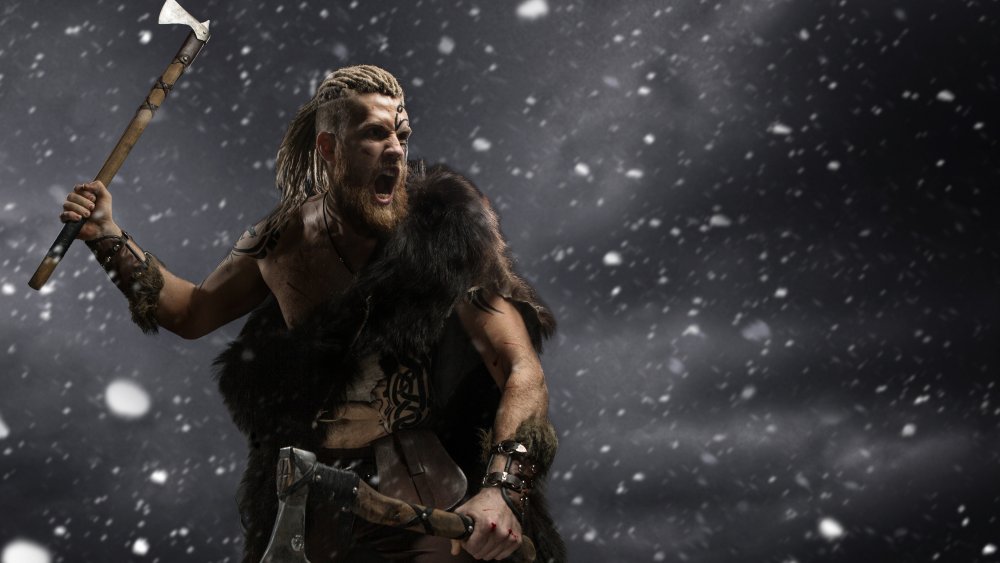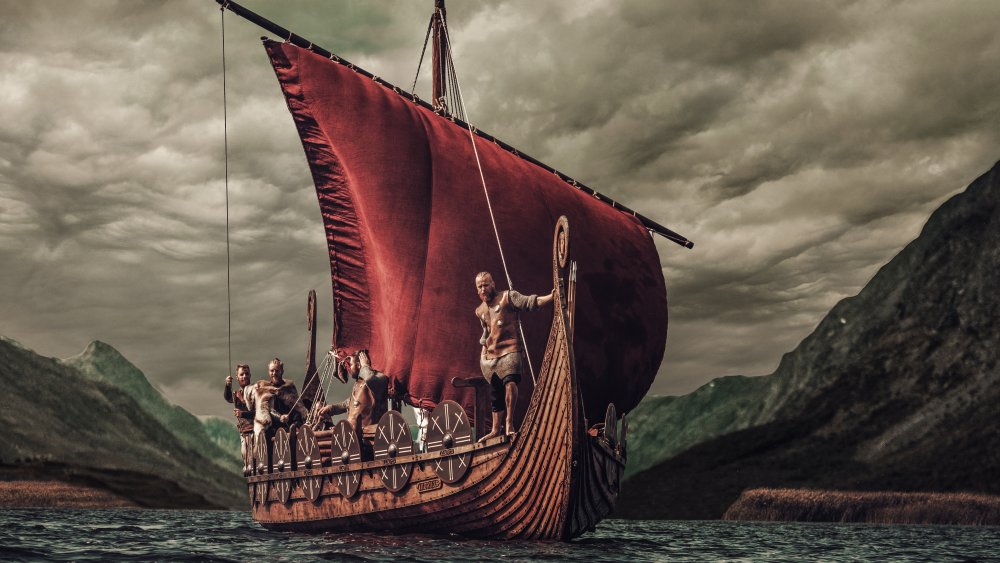The Truth About The Real Ivar The Boneless From Vikings
What did we do before social media let us check somebody out? Did we just sit around, making stuff up about somebody we may or may not have ever met? Yes. Yes, we did.
The history of 9th century Vikings is passed down to us today via Old Norse oral tradition, written down long after the campfires died and the tale spinners had gone to that great poetry slam in the sky. Did tales get changed? Quite possibly. Over time, things get added, subtracted, multiplied, and even turned into shows on the History Channel.
Case in point: Ivar the Boneless, a spooky kind of name for anybody, but especially when applied to a Viking raider who specialized in plundering England back in the 9th century.
We don't really know why he was called "boneless." Maybe he had brittle bone disease, though that seems like a real drawback in the whole Viking Marauder field. Maybe he was just agile. The legend was that he was cursed because his father, the delightfully named Ragnar Hairy Breeches, wouldn't wait for three days to consummate his marriage to Ivar's mother, which went against a witch's orders. Which doesn't explain anything at all.
Vikings loved a good sail, and Ivar was no exception
The legends are consistent, however, that he was no one you wanted to see landing on your beach, not even a Northern England beach. Sometimes described as a berserker, but always as fierce, Ivar's forces conquered a fair stretch of the Isle of Britain before moving on to Northeastern Ireland and the Kingdom of Dublin, then doubling back and claiming Scotland as their own, exacting tribute from Constantine (not Keanu Reeves; this Constantine was, at the time, King of Scotland).
And if nothing else, the lad was thorough. When he defeated Edmund, King of East Anglia, he had Edmund beaten, tied to a tree, shot with arrows, and then beheaded. Maybe the archers were lousy shots. Maybe he was just hedging his bets. Maybe the headsman had a "pay or play" contract.
Eventually he ruled England's York, which today has a terrific tourist attraction, the Jorvik Viking Center, explaining the archaeological dig and Viking artifacts from the area, including what passed for outhouses. The Vikings were human, after all.

